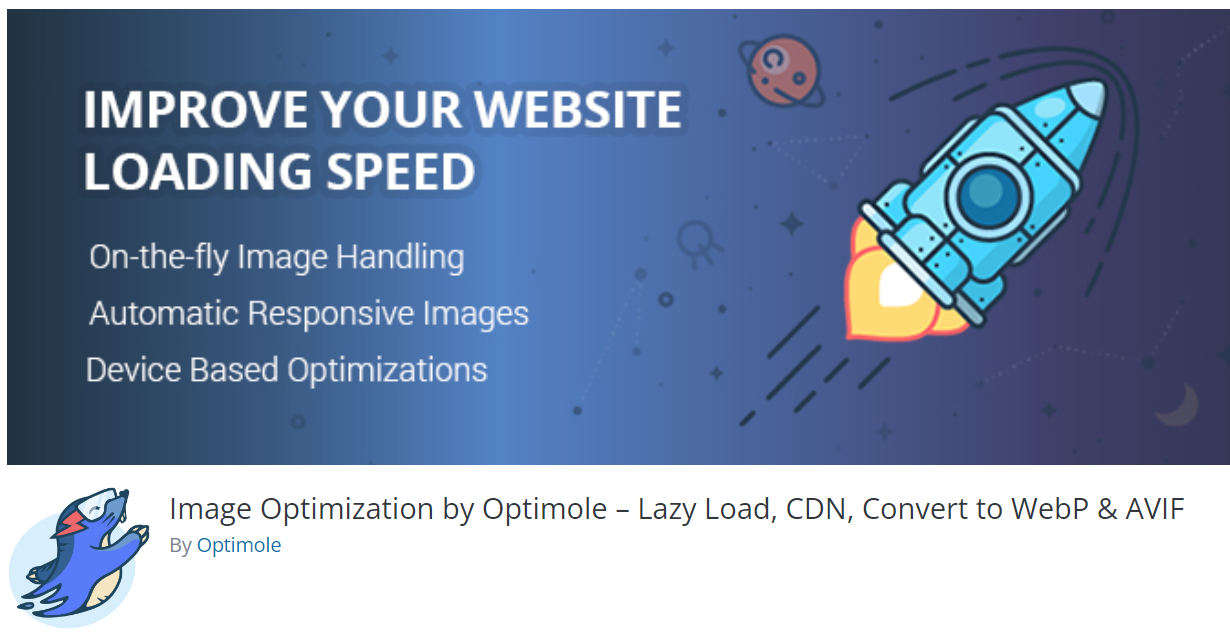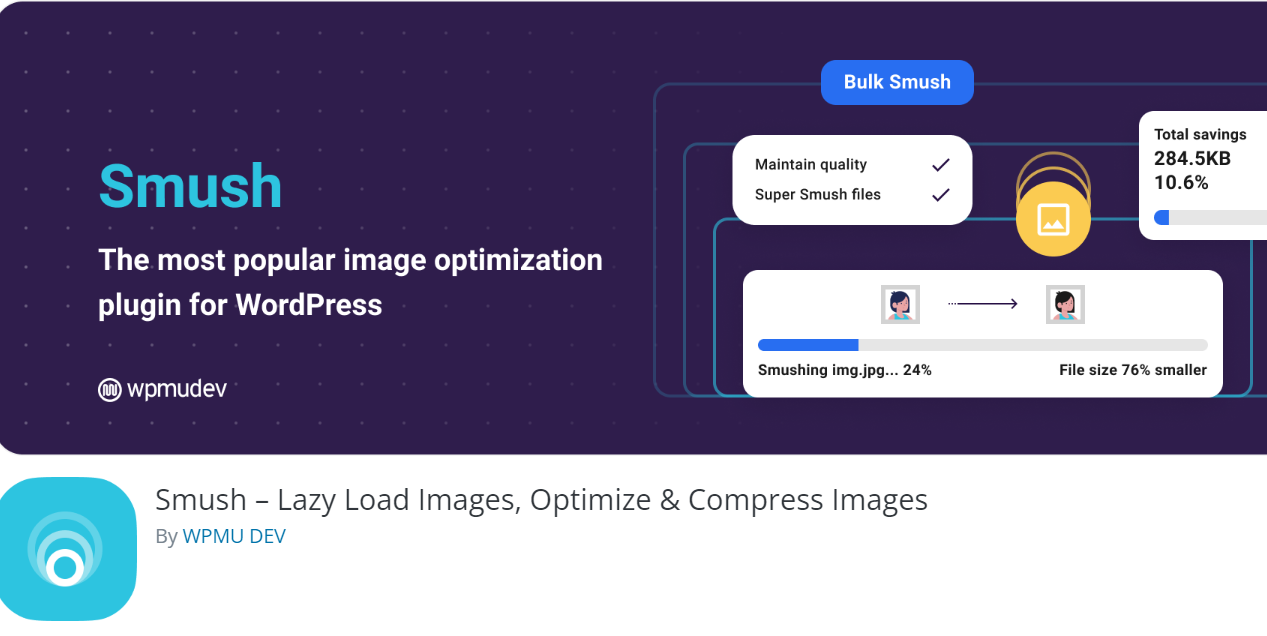What is lazy loading in WordPress: how to enable it on your site?
In this fast-paced digital world, a slow-loading website can significantly hamper a website’s performance and its presence on the internet. There could be multiple reasons for a slow-loading website, but images are one of the major contributors. No doubt, images make a valuable addition to the website’s content, making it interesting, engaging, and effective in conveying the message, but they consume much bandwidth and much time to load. Therefore, it’s important for websites to optimize images. If you are looking for an effective solution, consider Lazy loading. Lazy loading in WordPress is a valuable feature that delays the initial image loading time and helps you improve your website performance.
Are you curious to learn more about what lazy loading is and how you can enable it on your website? Continue reading the blog throughout the end to understand the whats and hows of it. In this blog, we’ll cover lazy loading in detail and help you grasp it in an engaging way.
So, without further ado, let’s dive into the details.
What is lazy loading in WordPress?
Lazy loading in WordPress is a technique used to optimize the loading speed of a web page and improve the overall page performance.
It delays the image loading times of a web page compared to other page content, enabling a page to load faster. To put it another way, lazy loading enables a web page to only load the images that are visible to users above the fold and delays the loading time of other images until they are needed, typically when the users scroll to them.
How lazy loading works on a website?
Typically, when a visitor visits a webpage, all the content, including images and videos, is loaded at once. This process is slowed down for web pages that include numerous high-resolution images and videos, impacting the page loading speed, performance, and overall user experience.
Implementing lazy loading in your WordPress website allows browsers to load images that are above the fold, meaning that they are visible on the visitor’s screen. The rest of the images or media files are loaded when the visitor further scrolls down the web page, which can significantly lower the loading times and improve the user experience.
Why is lazy loading important?
Till now, you must have understood the value of Lazy loading for a website. However, if you are still confused about implementing it on your site, the following are some valuable points supporting lazy loading in WordPress.
- Lazy loading reduces page loading times and improves the site speed.
- It lowers bandwidth usage and thus reduces hosting costs.
- It enhances the browsing experience of users
- It improves the site experience on mobile devices
- It optimizes the Largest Contentful Paint or LCP score.
- It improves search engine optimization, elevating the search ranking of your website.
What is native lazy loading?
Besides lazy loading, there is a strategy that is growing in popularity is native lazy loading.
It’s a new feature in modern web browsers such as Chrome, Firefox, and Opera that implement the lazy loading of images and videos without using JavaScript or plugin. This means that it automatically handles the lazy loading of images and videos without requiring any external code, using an HTML attribute.
This feature is valuable in improving the performance and accessibility of web pages and reducing the JavaScript code.
How does native lazy loading work?
Native lazy loading is a valuable and easy technique that works by simply adding the ‘loading’ attribute to the ‘img’ and ‘iframe’ tags. The loading attribute primarily has three values, namely, lazy, eager, and auto.
Lazy: When you use the lazy attribute, the browser will load the media, including images and videos, when they are close to the user’s viewport. This means that the media will load when it reaches the set distance from the viewport.
Eager: When you use the eager attribute, the browser will load the media, including images and videos, immediately, as the page loads without considering its location.
Auto: When you use the auto attribute, the browser will load the media, including images and videos, by default, as it loads in the absence of the loading attribute. It may be influenced by the user’s network speed and other factors.
How does lazy loading differ from native lazy loading?
Both are valuable in improving the performance of web pages but differ in working. Lazy loading requires JavaScript code or a plugin, whereas native lazy loading is an inbuilt feature of modern browsers and works using the attribute functionality.
Since lazy loading uses Javascript, it gives you more flexibility to customize the lazy loading behavior. On the contrary, native lazy loading is a lightweight and efficient solution as it does not require any coding.
Both solutions are effective on their own, but the only drawback of native lazy loading is that it is not supported on all browsers.
How to add lazy loading in WordPress?
Now that you’ve understood everything there is to know about lazy loading, it’s time to implement it on your website. In this section, we’ll cover three effective methods to add lazy loading. You can choose the best that meets your need.
1. Upgrade to a higher WordPress version.
To ease the lazy loading concerns of webmasters, WordPress versions 5.4 and higher, by default, come with the in-built image lazy loading feature. Thus, updating to a higher version of WordPress will automatically enable lazy loading on your site.
This is the easiest method of implementing lazy loading on websites. However, this method does not give you customization options, so you won’t be able to control which images to lazy load on your site.
Also, it’s crucial to note that every version starting with 5.4 up to the most recent one has a different lazy loading functionality. For instance, WordPress 5.9 comes with the improved Large Contentful Paint feature, which is not available in older versions. So, users of versions lower than 5.9 won’t be benefited from the advanced features. Thus, it’s preferable to upgrade to WordPress 5.9. Additionally, if you want to have more control over your site’s lazy loading, you can consider the other methods we’ve discussed below.
2. Enable Native Lazy loading for your images
We’ve covered native lazy loading in detail above to help you take advantage of this method.
To implement native lazy loading, you need to add the loading attribute, <img loading= “lazy”>, to the images you want to lazy load. This will automatically lazy load the image when it is loaded in the supported browsers.
The following is an example that can guide you on how you can use it for your images.
<img src=”image-name.png” loading=”lazy” alt=”alt attribute” width=”200″ height=”200″>
The native lazy loading method is effective but ideal for lazy loading some images, not for a website with large multimedia. This is because implementing native lazy loading for each image can be time-consuming, especially if you have a lot of media files on your site.
3. Using a WordPress plugin.
The next and most effective method to implement lazy loading in WordPress is to use a lazy loading plugin. This is because all browsers do not support lazy loading for images and videos.
WordPress plugins allow you to implement lazy loading on your site easily and effectively and also give you more control over which images should be lazy load. Here we’ll cover three WordPress lazy-loading plugins that are featureful and works well.
1. Image Optimization & Lazy Load

The first effective plugin in our list is Image Optimization & Lazy Load by Optimole. The plugin is free to use and supports all image types. It allows you to optimize your images to ensure optimal user experience.
The plugin is designed in a way that when experiencing a slower network, the plugin itself downgrades the quality of the images. In addition, it saves storage space by storing the images in its cloud library.
2. A3 Lazy Load

The next effective lazy loading plugin in our list is a3Lazy Load. It’s a free, mobile-oriented plugin that is compatible with major popular tools sucha s AMP and WebP as well as WP 5.9 version.
Along with offering basic image lazy loading features, the plugin also offers video lazy loading features. In addition, the other valuable features of the a3 Lazy loading plugin include WebP image support, iframe lazy load, and multisite support.
3. Smush

Smush is an effective plugin on our list that is very popular and provides you with easy image optimization features and supports lazy loading. It lets you easily configure and set various plugin settings in a few clicks.
In addition, it comes with other valuable features such as multisite support, image size detection, and valuable image compression tools that let you optimize your images effectively.
Practical Lazy Loading Tips for your website
Lazy loading is an effective strategy to improve the loading speed and performance of websites. However, you need to implement it properly to be benefited from it. The following are a few tips that you must focus on while lazy loading your website.
1. Avoid lazy loading the images that are on the top because they are visible when loading.
2. Ensure to choose the placeholder smartly, such as a solid color or a low-quality image.
3. Ensure to add a buffer time for your images so that they are ready before entering the viewport of the visitor.
4. Consider specifying the dimensions of the image container to avoid sudden layout shifts.
5. Consider implementing lazy loading with lengthy posts with more images.
All these will help you implement lazy loading on your site effectively.
Give your website a boost with Lazy loading!
Lazy loading is a valuable technique that helps you increase the performance and loading speed of your website by loading images and other media only when they are required. This helps save valuable resources such as bandwidth and also helps you reduce the loading time, which boosts the user experience as well as improves other SEO factors of the website. In this blog, we’ve covered everything there is to know about lazy loading in WordPress. To implement lazy loading in WordPress, you can either upgrade to the latest WP version, use native lazy loading, or choose a plugin that best meets your needs.
Implement lazy loading on your website if you are willing to enhance the loading speed and performance of a website. This will not only make your site fast and responsive but will provide a seamless experience for your website visitors.
We hope this guide has helped you understand and assist you in implementing lazy loading in WordPress easily and successfully.
Read Also: How to do image optimization for SEO.
Read Also: How to create additional image sizes in WordPress.
